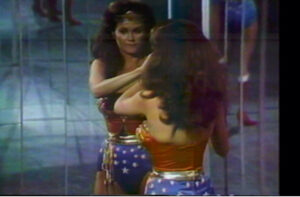Yugi Mutou, the iconic protagonist of Yu-Gi-Oh!, is instantly recognizable—spiked tri-color hair, Millennium Puzzle hanging from his neck, and that sleek, black leather-bound school uniform that clings closer to punk than prep. At first glance, his visual signature feels uniquely Japanese, wrapped in the stylings of late-’90s anime tropes and youth rebellion. But according to Yu-Gi-Oh! creator Kazuki Takahashi, the true source of inspiration for Yugi’s outfit wasn’t drawn from local fashion or teenage delinquent archetypes—it was a heartfelt tribute to a beloved piece of American gothic cinema: Tim Burton’s The Nightmare Before Christmas.
In interviews now archived in retrospectives and fandom deep-dives, Takahashi once revealed that Yugi’s look was in part inspired by Jack Skellington, the haunted yet noble Pumpkin King of Halloween Town. The dark palette, the exaggerated collar, the spindly silhouette, the slightly off-kilter elegance—all these elements nod to Burton’s 1993 stop-motion classic. It’s a detail that forever reshapes how we read Yugi—not just as a card-slinging savior or dual-personality protagonist, but as a cultural hybrid, born from Japanese storytelling and gothic Americana.
The Costume as Code: What Yugi Wears, and Why It Matters
Clothes have always been more than clothes in Yu-Gi-Oh!—they are signals, armor, visual lexicons that differentiate the ordinary from the extraordinary. When we meet Yugi, he’s diminutive, shy, socially peripheral. But the moment he transforms into Yami Yugi—his ancient spirit alter ego—his posture, voice, and especially his aesthetic presence shift into something powerful and composed.
His uniform becomes less a student’s mandated attire and more of a battle cloak, enhanced by leather belts, high collars, metallic accents, and the signature Puzzle necklace. There’s a subtle supernatural air to the look—punk meets priest, with a taste of the theatrical. It’s fashion as metaphysical threshold, a costume that bridges worlds.
What fans may not have realized in the late ’90s and early 2000s was that this costume drew deliberate cues from Jack Skellington—whose own skeletal, vertically stretched frame, pinstripe suit, and black capelet established a new gothic archetype for animated cinema. Both characters, in essence, wear their inner darkness on the outside—but not as villains. As avatars of identity and guardians of balance.
The Nightmare Before Yu-Gi-Oh!: Cultural Exchange in Action
It’s not surprising that Takahashi would find inspiration in Burton’s vision. In the 1990s, The Nightmare Before Christmas had already become a cult classic in Japan. While it took time to achieve commercial success in the West, Japanese fans quickly embraced its visual originality, melancholy charm, and distinct sense of outsider romance. Burton’s aesthetic—whimsical but eerie, sentimental yet anarchic—resonated deeply with the country’s growing gothic subcultures, particularly Visual Kei.
Takahashi, always an admirer of American comics, horror movies, and Western cinema, absorbed these currents into his own creative ethos. He has cited Hellraiser, Indiana Jones, and Batman as key influences on his style, and Burton’s work—particularly Nightmare—fit comfortably into that constellation.
Yugi’s clothing, then, is more than homage. It is translation. A reinterpretation of Jack Skellington’s haunted grace into the language of anime heroism. Where Jack ruled Halloween Town with existential angst and flair, Yugi guards the shadowy realms of Duel Monsters with moral clarity and mystic edge.
Gothic Style in a Shonen World
Yugi’s design is unusual within the framework of shonen anime. While characters like Goku (Dragon Ball) or Naruto wear martial arts uniforms and bright, earth-toned palettes, Yugi is clad in black, silver, and navy. His outfit resembles not a warrior’s uniform, but a mix between a gothic ringleader and a punk concertgoer. This marks him as both stylistically and spiritually different from his peers.
The influence of Burton’s gothic stylings opened a door to visual experimentation. Yugi’s look paved the way for later anime characters who combined melancholic mystery with visual audacity: Lelouch from Code Geass, Ciel Phantomhive from Black Butler, or even Light Yagami from Death Note in his most theatrical moments. In many ways, Yugi became a precursor to a darker, more style-conscious kind of anime hero.
This turn toward gothic elegance wasn’t merely aesthetic. It allowed deeper themes to bloom—questions about duality, death, legacy, and the consequences of power. Characters who dressed like heroes were no longer sufficient. Audiences wanted their protagonists to look conflicted. Yugi, clad in darkness yet fighting for light, was one of the first to embody that contradiction fully.
The Collar, the Chains, the Puzzle: Details that Tell a Story
When broken down into components, Yugi’s outfit is a mosaic of Burtonesque symbolism:
- The High Collar: Evocative of Jack Skellington’s bat-shaped bowtie and his aristocratic suit, Yugi’s spiked collar brings regality and theatricality into his school uniform, separating him from his classmates.
- The Belts and Metal Rings: Decorative yet aggressive, these accents mirror Burton’s love for clanking, industrial motifs—metalwork that suggests restraint, tension, and transformation.
- The Millennium Puzzle: Hung like a talisman, its triangular geometry and ancient origin link Yugi to realms beyond the everyday—like Jack, who dreams of Christmas from his throne of bones. The puzzle is his portal, his burden, and his badge.
Takahashi’s brilliance lies in not copying Jack’s aesthetic wholesale but encoding it into a different mythos—layering meanings into visuals, allowing fans to uncover them with time.
Tribute vs. Appropriation: A Note on Artistic Integrity
In an age where cross-cultural design often raises questions about appropriation, Takahashi’s homage to Burton is a case study in respectful artistic synthesis. Rather than mimicking The Nightmare Before Christmas or inserting its iconography directly, he transformed its feeling—that sense of being haunted yet hopeful—into a wholly new character.
Takahashi didn’t borrow Burton’s world. He learned from it. He mirrored its ethos in a way that felt personal, innovative, and ultimately Japanese in form and narrative. Yugi is not Jack. But he carries Jack’s shadow—and that shadow has become part of his own.
Impression
In revealing that Yugi’s look was inspired by The Nightmare Before Christmas, Kazuki Takahashi offered fans not just a fun Easter egg, but a profound insight into how art moves between cultures, genres, and generations. What began as a stop-motion poem about longing and identity found its echo in the spiked silhouette of a shonen hero.
This revelation transforms Yugi from anime icon to cross-cultural artifact—his outfit not merely stylish, but storied. It becomes part of a legacy that stretches from Halloween Town to Domino City, from California to Tokyo, from Jack’s melancholy to Yugi’s defiance.
And in that connective thread, we find something beautiful: that the things we wear—whether stitched, sketched, or imagined—carry stories. And sometimes, those stories begin with a nightmare, lovingly turned into art.
No comments yet.








